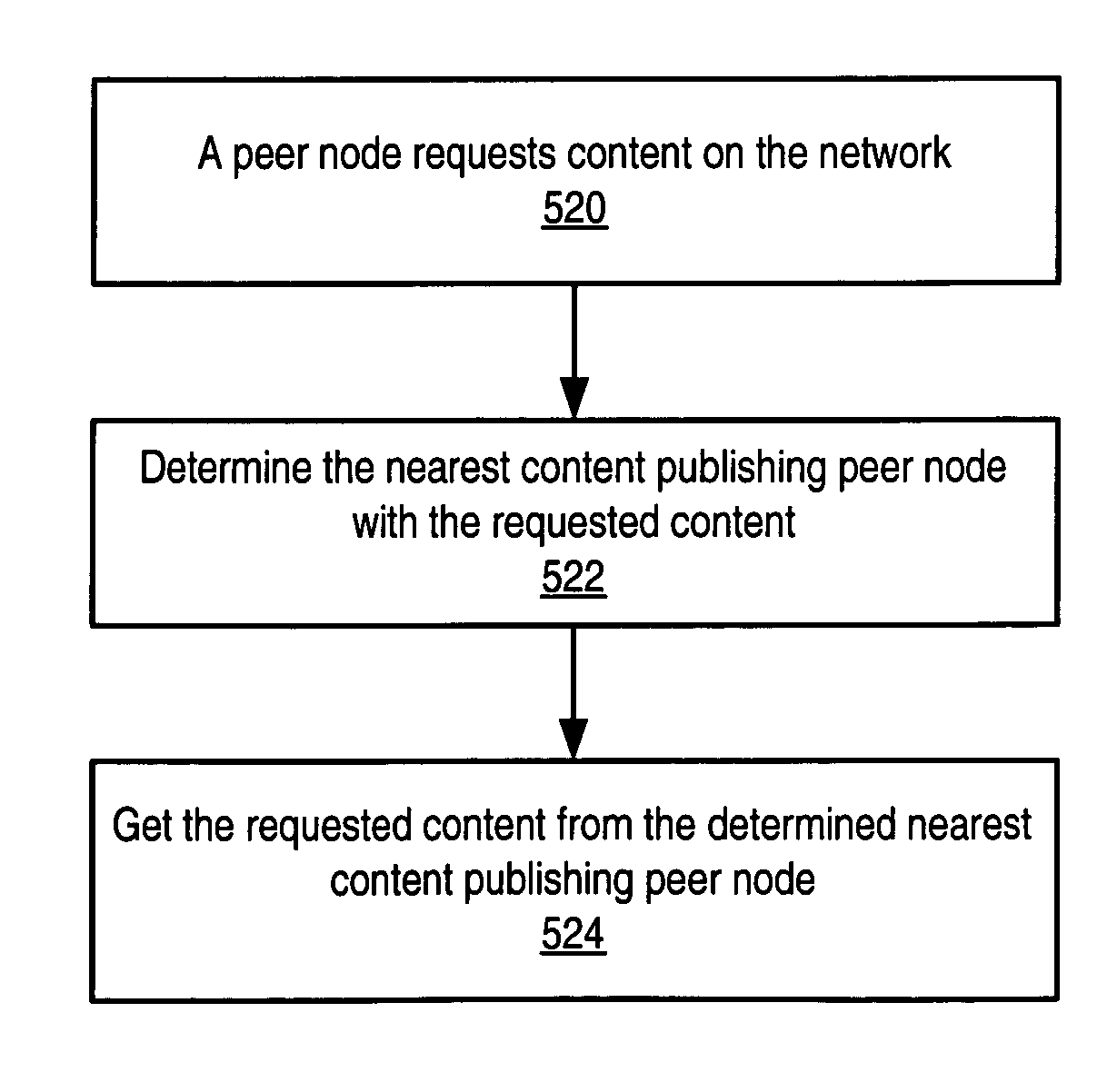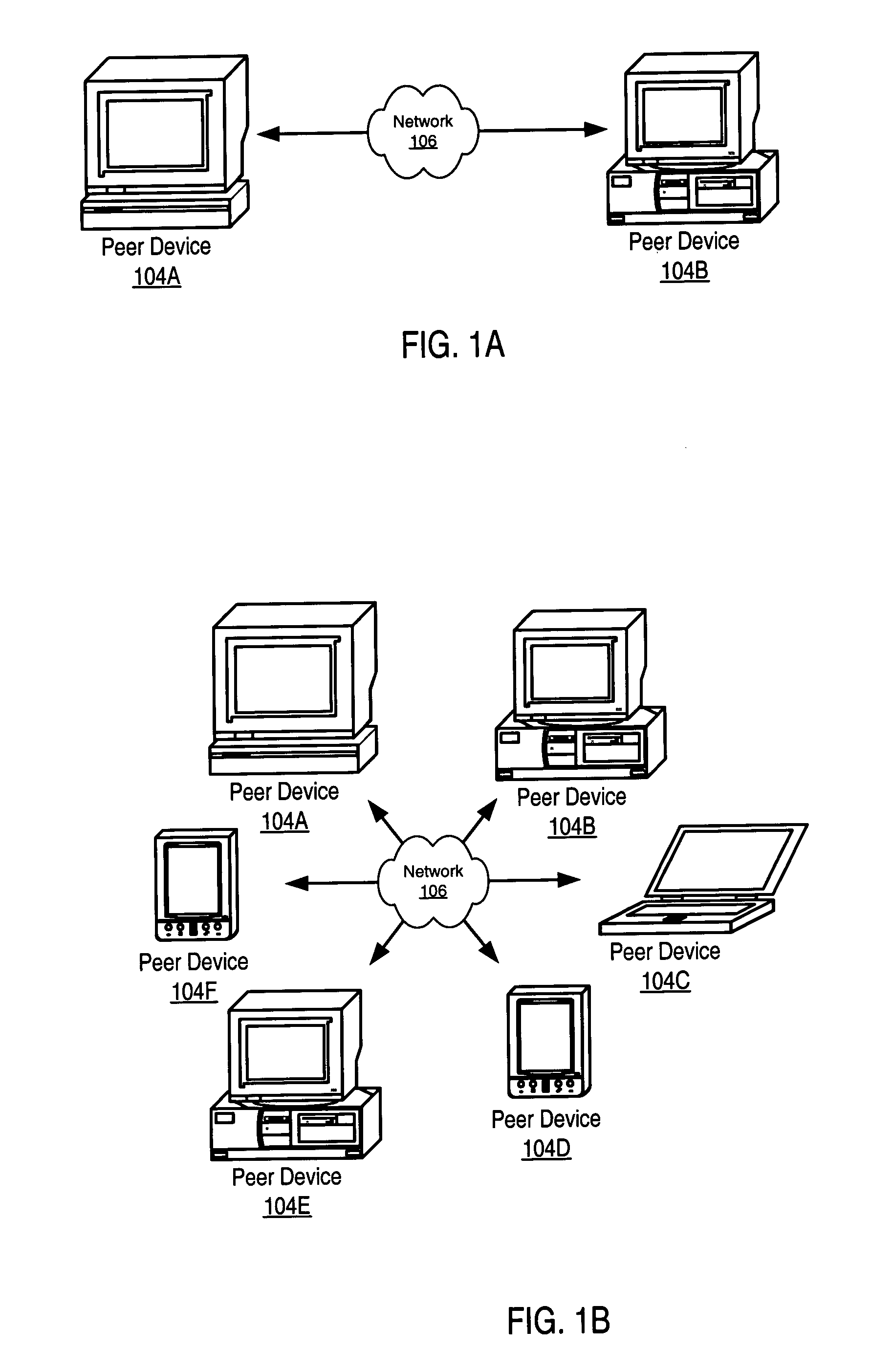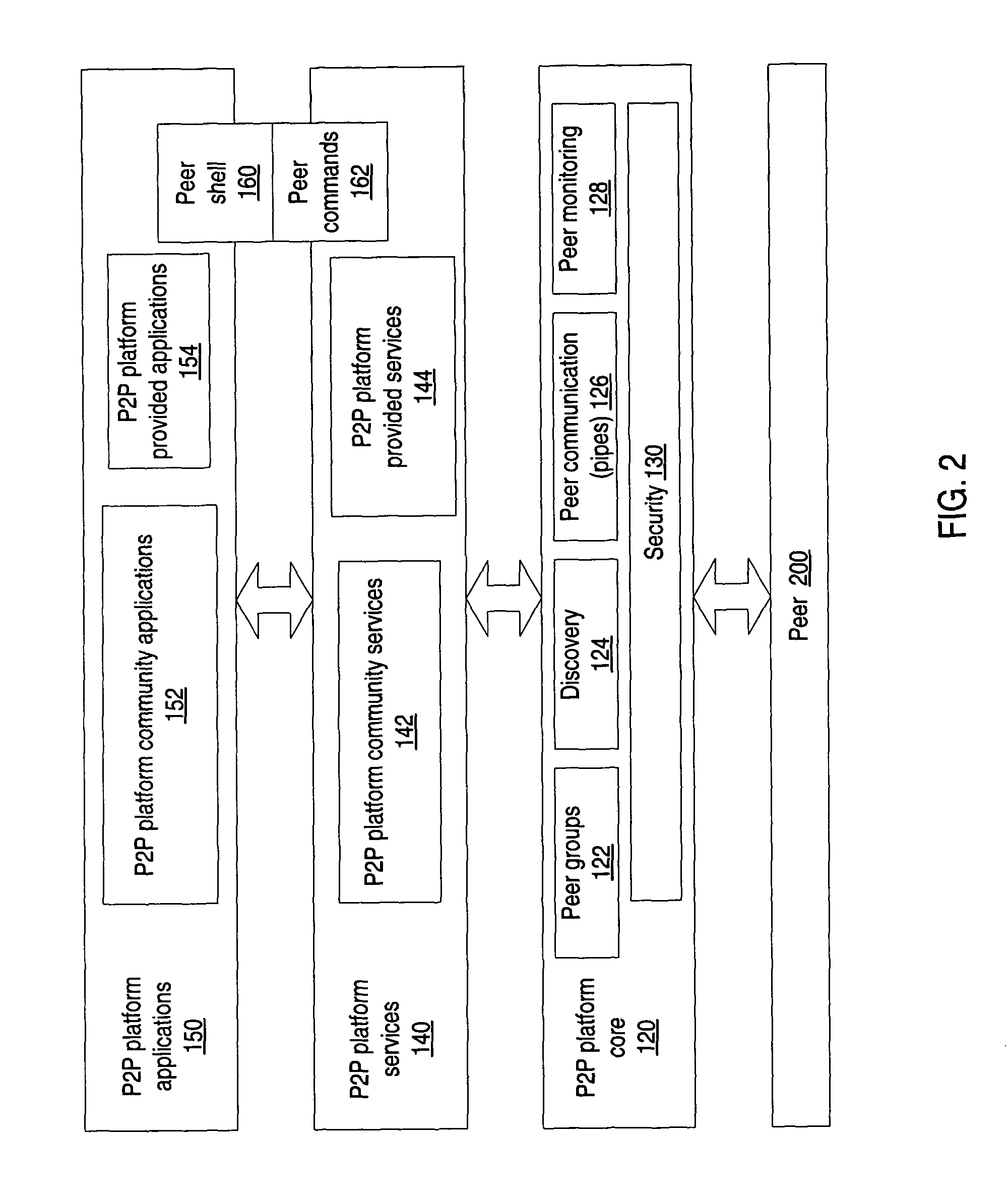Peer-to-peer content sharing/distribution networks
a peer-to-peer content and network technology, applied in the field of peer-to-peer content sharing/distribution networks, can solve the problems of not being able to locate and catalog the ever-increasing amount of information by single search engine or portal, and the difficulty of finding useful information in real time, so as to save access to a central server
- Summary
- Abstract
- Description
- Claims
- Application Information
AI Technical Summary
Benefits of technology
Problems solved by technology
Method used
Image
Examples
Embodiment Construction
[0070]Embodiments of a peer-to-peer-based content sharing / distribution network (CDN) are described. Embodiments may be used to distribute content to the edges of a network and / or the Internet. In addition, embodiments may be used to distribute content within an Intranet and / or on a proprietary network, e.g. a network of Set Top Boxes. In embodiments of a peer-to-peer CDN, content consumers may also serve as content publishers, as the content publishers and consumers are peers in the peer-to-peer network. Thus, embodiments may serve contents to and from the edge of the network or Internet. Embodiments preferably provide an economic solution to the problems of prior art client / server content distribution models. In the Client / Server CDN model, it is the server that is the primary content publisher / distributor. In the peer-to-peer CDN model, an edge peer (or any peer) may be a primary content publisher / distributor, thus providing freedom for anyone to publish and distribute contents ra...
PUM
 Login to View More
Login to View More Abstract
Description
Claims
Application Information
 Login to View More
Login to View More - R&D
- Intellectual Property
- Life Sciences
- Materials
- Tech Scout
- Unparalleled Data Quality
- Higher Quality Content
- 60% Fewer Hallucinations
Browse by: Latest US Patents, China's latest patents, Technical Efficacy Thesaurus, Application Domain, Technology Topic, Popular Technical Reports.
© 2025 PatSnap. All rights reserved.Legal|Privacy policy|Modern Slavery Act Transparency Statement|Sitemap|About US| Contact US: help@patsnap.com



